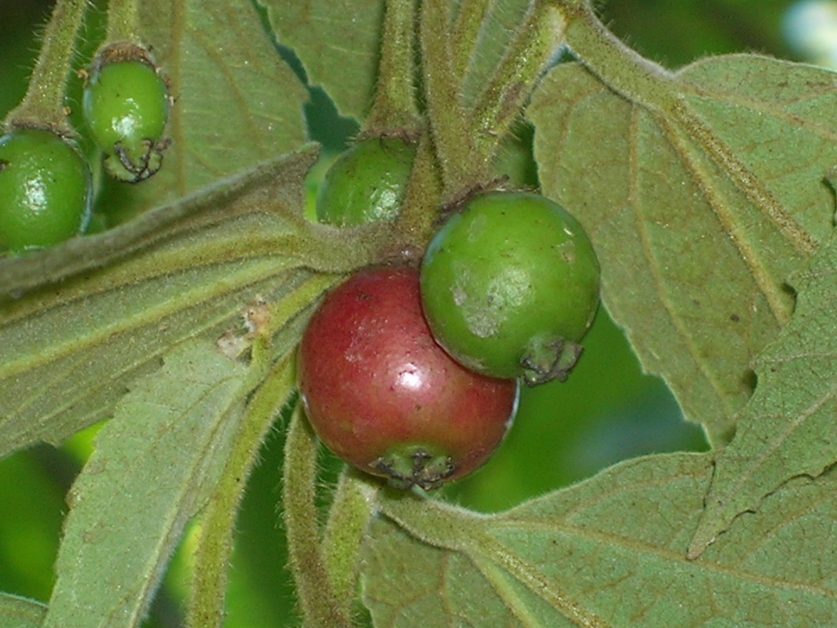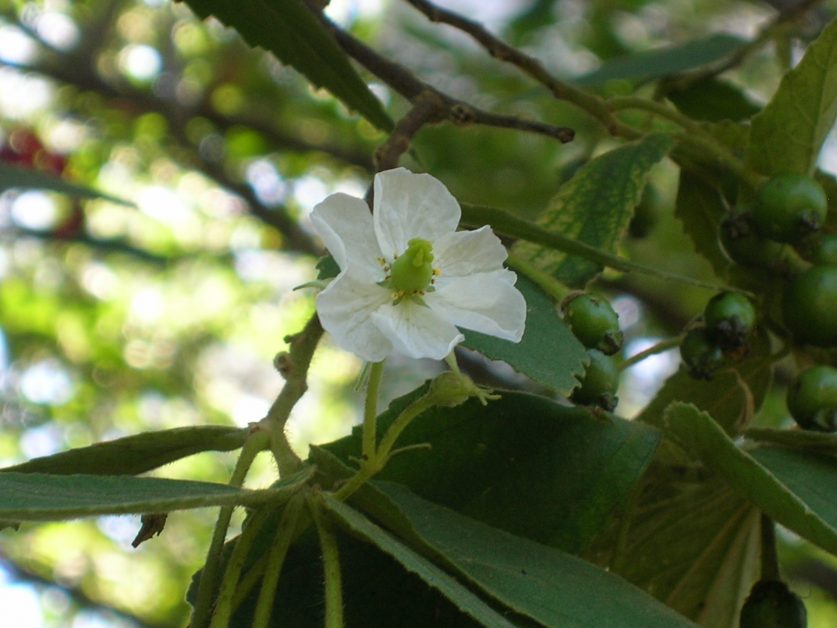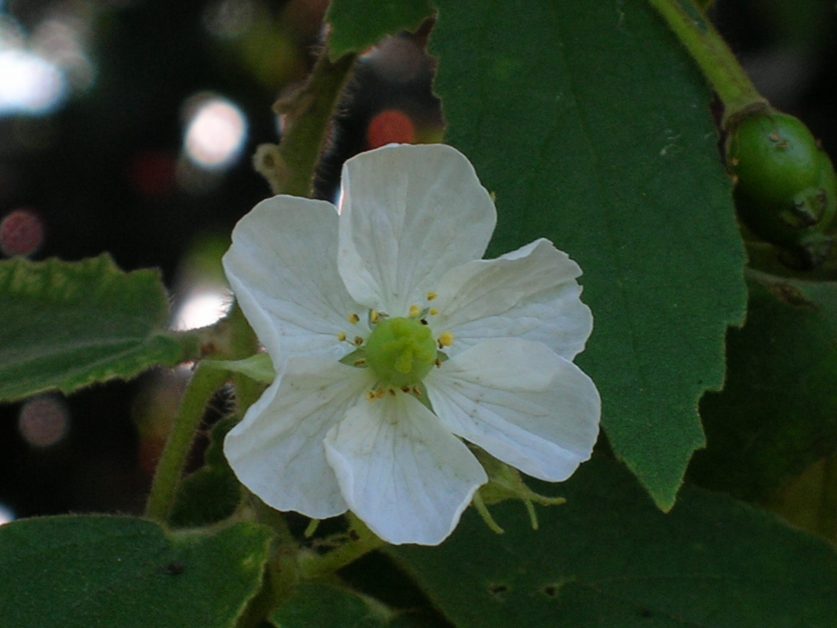Strawberry Tree (Muntingia calabura)
Strawberries growing on trees? Well, not exactly. But there is something called the Strawberry Tree, and it does produce a nice, edible red fruit. Just to add to the confusion, the common name doesn’t refer to the plant’s fruit, but to its flowers, which resemble those of the traditional strawberry.
We’re talking about Muntingia calabura, a fast-growing shrub or small tree native over a large range from southern Mexico through the Caribbean and Central America, and into South America as far south as Argentina. It exists at elevations from sea level to 3,300 ft. Where native it may reach 35 ft. or so in height, but in southern Florida 12-15 ft. is more likely. It bears oblong or lanceolate leaves on spreading, almost horizontal branches. The Strawberry Tree is amenable to poor soils, whether alkaline or acidic and, once established, capable of withstanding drought and neglect. It can also be planted next to fresh water bodies, but will not tolerate salt. It has a reputation for holding up well to polluted air. For best results, plant this species in full sun.
The fruit of M. calabura is round and smooth, up to 1/2 in. or so in diameter. Those characteristics account for some of its other common names: Jamaica Cherry, Panama Berry, and West Indian Cherry. It has lots of other common names, a tribute to its distribution around both New World and Old World tropics, where it has picked up local appellations. The flesh of the fruit is soft and quite sweet, somewhat fig-like in taste, and can be eaten out of hand or made into jams or tarts.
The Strawberry Tree has a number of interesting features besides the eating quality of its fruit. Its flowers provide a source of nectar and pollen for beekeepers. Its wood serves as a source of fuel, as well as of timber for interior locations. Its bark contains fibers that can be fabricated into twine and rope. And it is reputed to possess various medicinal properties, including antispasmodic, antifungal, antioxidant, anti-inflammatory, cardioprotective, analgesic, antibacterial, and antipyretic.
M. calabura should not be confused with Arbutus unedo, another species also commonly known as Strawberry Tree. The latter will not grow sastisfactorily in southern Florida.
M. calabura is available at Richard Lyons’ Nursery in 3-gal. containers.
- Muntingia calabura (Strawberry Tree)
- Muntingia calabura (Strawberry Tree)
- Muntingia calabura (Strawberry Tree)


